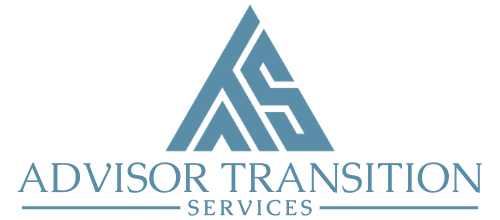Choosing a Custodian
Choosing a custodian is an important decision when starting an RIA. The problem is, it’s hard to find objective research on the subject. The only resource I could find that compares the different platforms is this article written by Michael Kitces several years ago, and the information is slightly out of date and Raymond James isn’t even mentioned at all.
So, how do you know which platform is best for your business model?
The information you get directly from the custodian is not objective. They are going to put you in touch with the Business Development Officer for your geographic location. That person is paid to recruit you. The information he/she provides may be valuable, but it certainly cannot be considered objective.
It’s difficult to know where to turn and who to talk to.
Enter me.
Hi, I’m Grier Rubeling.
I am a transition consultant. I assist with the administrative and operational aspects of transitioning books of business. Before I started my firm, Advisor Transition Services, I worked in various support roles for advisors. As the Director of Operations for an RIA, my last-held job, I utilized the Raymond James and Charles Schwab platforms simultaneously.
I am intimately familiar with both platforms from an operational standpoint. I also have experience using the TD Ameritrade platform, so I understand the technology and processes that Schwab has recently acquired.
As an unbiased, knowledgeable resource, I can explain in my own words, from my point of view, how Raymond James and Schwab differ. For whatever reason, I am often approached by advisors and teams who are trying to decide between the two platforms. Two platforms that could not be more different.
Befitting industry standards, I’d like to take a moment to ruin a perfectly good piece of content with some disclosures.
DISCLOSURE: The following opinions are my own. They’ve been formed from years of experience in this industry, using these specific platforms. I’ve never worked for either establishment, and I don’t know how things are actually handled internally. I’m just reporting on what I’ve experienced and how those experiences have shaped my views.
Raymond James
I would describe Raymond James as the closest platform to a wirehouse platform. Because they work with advisors in ALL channels, they have systems in place to serve ALL channels. The technology, procedures, and support provided are similar across each of those channels.
The advantage of being an advisor leaving a captive wirehouse environment is that transitioning to the Independent Advisor’s Division (IAD) of RJ can be much less of a culture shock than transitioning to a custodian like Schwab. The technology is built to service those types of individuals and teams because they DO service those types of individuals and teams.
In fact, I have seen a growing trend of advisors in other RJ channels transitioning to IAD in order to keep the same general service model but gain a new level of independence. RJ has an internal group that assists with the process of switching channels. Something I find to be a little counter-intuitive and a bit of a conflict of interest, but that’s a conversation for another day.
An additional RJ advantage is that their technology is proprietary, so they’re constantly spending money to update it internally and TRY to give the people what they want. I will say that their efforts have been rather slow, but the updates they do make are usually important, well-planned, well-executed, and user-friendly. However, IAD is the least profitable division of the company (so I’ve been told), so updates specific to the RIA platform are low on the priority list.
For example, RJ still does not provide advisors a way to send their firm documents (Client Agreement, ADV, Privacy Policy) to clients for electronic signatures. DocuSign is provided for all RJ internal new account and transfer documents, but it is a closed platform that does not allow external documents to be included.
RIAs are required to send firm documents to ALL clients during a transition and upon establishing any new relationships. Thus, this deficiency is significant. Advisors must purchase their own version of DocuSign (or other e-signature platform) if they wish to have their client contracts signed electronically.
I will note that Schwab does provide a separate instance of DocuSign for advisors to use to send firm documents. It has its limitations, but it is available.
To expand more on the use of proprietary technology, RJ loves to do things in-house. They provide access to numerous resources that independent firms can use that they then do not need to pay for separately. Those resources are covered in the custodial fees that RJ charges to advisors. Their fees tend to be significantly higher than Schwabs. Even if you don’t plan to use the proprietary resources, you will likely still be paying for them.
Which brings me to my next point. As I have explained, proprietary technology has its advantages, but it has disadvantages as well. Because RJ puts a lot of money into their technology and prides themselves on that fact, they do not integrate as well with outside technology. If your heart is set on picking your own technology stack and building a business around it, RJ is probably not your best choice of platform.
Because RJ has so many divisions, their compliance team is robust. They do not provide direct compliance oversight to individual RIAs, but many of their procedures are rooted in that FINRA-compliant mindset.
That can be an advantage to those who want an extra layer of oversight. A team of individuals checking up on suspicious activity and calling clients for confirmations of money transfers.
It can also be a disadvantage for individuals/teams with irregular activity, unique client situations, or outside business activity.
One of the biggest differentiators to me is RJ’s support. Not only can you call different departments directly and speak with subject matter experts, but you can also call your IAD service team for more generalized support and customized assistance.
In a nutshell, Raymond James best serves advisors and teams looking for an all-in-one solution with great support, proprietary technology, and robust security measures.
Charles Schwab
Schwab is by-far the largest and most well-known platform for RIAs. It has been around the longest and is usually the first platform on everyone’s list to research. More so now that it has acquired TD Ameritrade.
An advantage of the Schwab platform is its ability to serve the masses. Unlike Raymond James, Schwab allows for a lot of external integrations. The disadvantage is that they do not seem to be as concerned with boosting their own technology and resources.
Ask anyone in upper-level management and they will tell you their technology is the best of the best and they are making all sorts of wonderful improvements to it. I have yet to see the fruits of that labor. In fact, I regularly interact with service team members and they tell a very different story.
As someone who transitions advisor assets for a living and works with the same institutions regularly, I am a huge proponent of providing feedback about the process. When I speak with Schwab support staff, I am often met with mutual commiseration and frustration. When I speak with “decision makers”, I am often met with denial or resistance.
The biggest issue I have with Schwab technology, process, and procedures is that everything operates in silos.
You don’t open “households” with Schwab. You open “accounts”. The accounts can be grouped into relationships after the fact, but only for visual purposes. Accounts get opened and processed individually, by different people. Paperwork sent via DocuSign is done by account, not household.
I’ll note that Raymond James does focus on households and makes the account opening process extremely intuitive.
The account opening process for Schwab is hard to explain. Maybe, because there are at least 3 ways to open an account in the system. None of them is ideal or all-inclusive. It’s as though they start over every time they get enough complaints about a current system. Instead of focusing their efforts on improving the existing one, they just create a whole new one complete with its own set of flaws. I imagine that approach is time-consuming and expensive, but I could be wrong.
After almost every transition I do with Schwab, I try to get in front of a decision-maker within the organization to offer feedback. Sometimes I’m met with enthusiasm. Other times not. The end result is usually the same. Someone eventually ghosts me and the trail goes cold. If you’re a Schwab decision-maker who thinks you could benefit from having a conversation with someone who uses the system to help advisors transition and has a running list of pain points… Hi, let’s talk.
The support is lacking with Schwab as well. I attribute most of the issues to a rapid organization growth rate. Made worse by the pandemic forcing many to work remotely… and those dang silos. The support teams are assigned by region, but the individuals aren’t generally subject matter experts. They’re general knowledge support. Meaning, you might get a person on the phone in your region willing to help you, but they’re still going to have to reach out to another department to get you specific answers, in most cases. Possibly even to the individuals assigned to your open service cases.
While I do think that the acquisition of TD Ameritrade is interesting and potentially beneficial to advisors currently on or thinking about joining the Schwab platform, I think there are a lot of kinks that will need to be worked out before anyone sees those benefits, and things could get worse before they get better. Overall, despite what it may seem from my last few paragraphs, I do believe that the Schwab platform is a good one. Their technology is lacking but their ability to integrate with other technologies makes them ideal for the advisor who wants to build an awesome tech stack, and they’ve already committed to adopting some of the more popular pieces of technology that TD Ameritrade has to offer.
The Transition Process
I started writing about the differences in the actual transition process for each firm, but this article started getting super long, super fast.
Instead of spilling all my secrets, I decided to just give a quick overview of the process for each. For a much more elaborate breakdown, contact me here and I’ll talk your ear off.
Some of the basic parts of the process that will be the same, regardless of which custodian you choose, are as follows. For ease of purpose, let’s assume I’m consulting on a transition that falls under the Broker Protocol. Meaning, the institution you’re exiting is also part of the Broker Protocol. If your current firm is not in the Broker Protocol, these processes could be a little different.
Processes that are the same for both:
- NEITHER one can accept your protocol data until AFTER you resign from your current firm and are registered with the new firm
- NEITHER can begin to generate client documents until that data has been received
- BOTH provide access to DocuSign for electronic signatures of account paperwork
- BOTH provide a spreadsheet for you to submit your current holdings so you can see what is and is not transferrable
- BOTH provide a transition consultant – this person will not help you open accounts or generate paperwork (in most cases)
Processes that are different for each:
Account Opening:
RJ: Requires individual(s) on the RIA team to open the accounts using their Client Onboarding System (even if you have client-signed applications).
SCHWAB: Custodial staff will open accounts if applications are signed and submitted.
Householding:
RJ: Allows you to open all the accounts for a household at the same time and the paperwork gets generated in one packet for one signature from each client.
SCHWAB: Requires accounts to be open and paperwork generated and signed by clients on an account basis. For DocuSign, an envelope is sent for client signature for EACH account. 8 Accounts = 8+ DocuSign Envelopes.
Transfer (and other ancillary) Forms:
RJ: Does not provide a way for transfer forms and ancillary forms to be generated with the new account packets. They must be done separately as manual PDFs. They CAN all be sent together in the same DocuSign envelope to the client but not the same envelope as the new account forms.
SCHWAB: Does allow you to send transfer and ancillary forms in the same DocuSign packet as the new account forms, but they still have to be separated out by account.
DocuSign:
RJ: Provides the DocuSign platform to advisors for their use in sending client documents. However, it is fully locked down for editing. No changes can be made to documents by clients, and the option to send firm documents is currently unavailable.
SCHWAB: Provides the DocuSign platform to advisors for their use in sending client documents. They will even generate the packets with client forms and protocol data included. They do allow clients to make changes to the documents if the advisor chooses to allow it, and they do have another version of the platform for advisors to use for their firm documents. However, the DocuSign packets are all created on an account level, so client data must be entered multiple times, which raises the risk of human keystroke errors.
My Conclusion.
When it comes down to it, there is no “better” solution. I would go so far as to say that comparing Raymond James to Charles Schwab is like comparing apples to oranges. They’re both fruit, but they are very different types of fruit.
Your decision will come down to your individual needs. Hopefully, my efforts here have provided a small level of clarity for you.
If you’d like to speak in more depth about the options, learn more about creating a transition plan, or get help starting an RIA, reach out to me via email and schedule a free consultation.





A very relevant comparison pointing directly at very frustrating methods that need to be cleaned up ASAP.
The financial advisory population is migrating in larger numbers to the RIA channel and firms wanting to receive and support these client assets need to address these flaws quickly. They have not recognized this tidal wave is coming at them. Lots of flawed management.
Great article and well written.
Very well done and detailed message. It will help some advisors make a better decision.